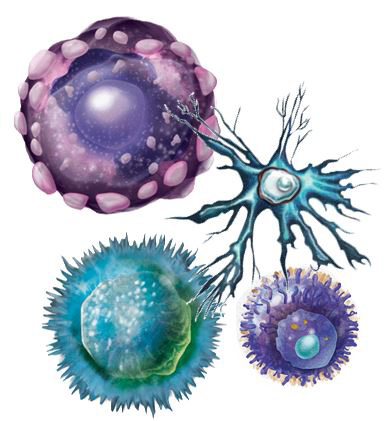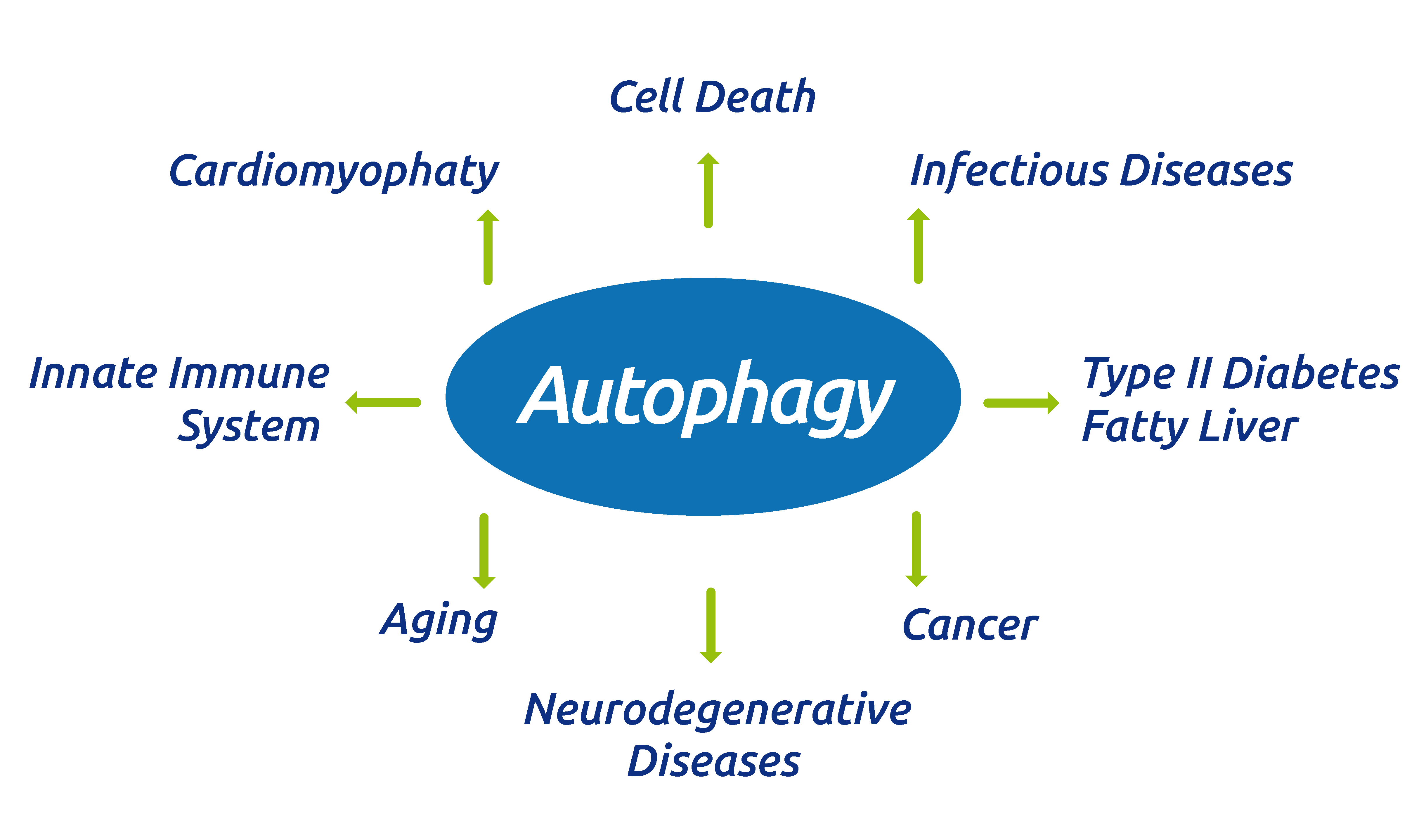 Human Peripheral Blood Mononuclear Cells (hPBMCs) are essential for designing cellular models to be used in cell therapy and drug discovery research programs [1-7, 12]. Being able to access reliable and ethical sources of well-characterized hPBMCs is now becoming fundamental for running physiologically relevant cell-based assays. A good opportunity to discuss the expanding applications for hPBMCs in drug development.
Human Peripheral Blood Mononuclear Cells (hPBMCs) are essential for designing cellular models to be used in cell therapy and drug discovery research programs [1-7, 12]. Being able to access reliable and ethical sources of well-characterized hPBMCs is now becoming fundamental for running physiologically relevant cell-based assays. A good opportunity to discuss the expanding applications for hPBMCs in drug development.
Why use Human Peripheral Blood Mononuclear Cells (hPBMCs)?
While cell lines are an excellent tool for early-phase discovery and screening, human primary cells (like fibroblasts, preadipocytes, stem cells & stem cell-derived primary cells, keratinocytes, pancreatic islet cells to name a few) can provide an accurate representation of physiology or disease state for later preclinical stages like PoC, MoA or patient stratification [13]. This is even more true when in vitro cell-based assays are made with physiologically relevant cell culture conditions (3D cell culture, Organoids, organ on a chip, microfluidics, and recent new innovative cell culture devices for more predictive 3D models).
Primary human cells can also introduce added complexity into the interpretation of research results due to genetic differences in the human donor population. However, the diversity of different donors more accurately represents the general human population, and so can bring more physiologically relevant data regarding drug efficacy and drug toxicity to light particularly related to immune responses of different HLA types.
Human primary blood cells (hPBMCs) in Host-directed Therapeutics (HDT)
In order to account for human genetic variation, a panel of hPBMCs representing a spectrum of human genotypes can provide superior assay development, cell-based assays, and screening platforms for drug development. This panel could support the identification of immune modulation factors (ex. inflammation factors), early identification of effective vaccine antigens, and other therapies that may be affected by immune functions. For example, in a recent study, hPBMCs infected with tuberculosis bacteria (TB) were exposed to an RNAi library to identify Host-Directed Therapeutics (HDT) that increased macrophage resistance to infection by TB [12]. HDT is a relatively new approach to antibiotic-resistant infection in which immune response pathways that are down-regulated by pathogens can be targets for increasing innate resistance to infection.
hPBMCs in Antibody-mediated cellular cytotoxicity (ADCC) and Mixed Lymphocyte Reactions (MLR)
Antibody-mediated cellular cytotoxicity (ADCC) in vitro assay testings are based on hPBMCs to identify regulatory pathways for enhancing cell target killing activities.
For antibody-based therapies such as anti-Her2 in breast cancer, ADCC is a major mechanism for inhibition of tumor growth. However, acquired resistance to the therapeutic commonly develops over time. A recent study examined gene expression in ADCC-resistant inflammatory breast cancer cells in order to discover target pathways that could increase sensitivity to ADCC [3]. The researchers identified a target gene that rendered the breast cancer cells more sensitive to ADCC, and thus could supplement antibody-based therapy over time.
Mixed lymphocyte reactions (MLR) are used to demonstrate safety and are commonly part of the testing for FDA clearance as an indication of immune stimulatory response to a drug (NCE) or biologic (NBE). Human lymphocytes of different HLA-types are mixed and the reaction is determined by the cellular proliferation response. This assay is increasingly used in the development of allogeneic cell therapy to test the potential for immune rejection of ‘banked’ cells from a donor that is transferred to patients [15].
Adverse Drug Reactions (ADR) related to immune response can result in long term liver injury or shorter-term inflammation due to hypersensitivity or allergy [2, 8, 14]. Recent studies using hPBMCs have demonstrated an association with specific HLA types and T-cell mediated cytotoxicity [9]. Because of the complex diversity of HLA genotypes in the human population, preclinical tests for immune reactivity to drugs and their metabolites are difficult to develop. While approximately 10% of ADR are immune-modulated [10], strategies to assess and monitor the potential for immune responses to drugs are poorly defined and not widely adopted in drug development programs. Humanized mice models offer a step beyond in vitro assays for toxicology [11]. Mice that are genetically selected for disabled innate immune systems can serve as hosts for transplanted human immune systems using hPBMCs, which engraft and propagate within the mouse. This system enables observation of a transplanted human immune system in response to drugs or diseases in animals. Data from multiple individuals can also be obtained.
As a blood-derived primary cell provider, we have observed that some lots of primary cells from specific donors engraft in humanized mice better than others. This might be linked to the involvement of the limited mouse immune system that reacts to human cells thus causing graft-versus-host-disease (GVHD) in the host. Thus it may be of value for researchers using humanized mice to qualify a specific lot of primary cells to be used in their studies. Some researchers prefer to use human primary cells of one genotype, and from the same donor, over the course of a study to better control variability in results. For manufacturing development and target identification screens, this can minimize variation in results. Later stage validation studies may benefit from using a larger genotype representation.
hPBMC “quality”
The quality of hPBMC starting material in a manufacturing set-up can also influence experimental results. The collection methods, shipping, and handling, as well as medical history and current health of the donor can all affect results.
While assessment of hPBMC ‘quality’ is often limited to cell count and viability, other factors including cell activation state and donor medical factors, such as recent vaccinations, disease diagnosis, medication, ethnicity, gender, geographic origin…, may influence the interpretation of experimental results. Thus it is critical that researchers obtain well-characterized and consistent cell material for their in vitro studies.
An ethical and medically safe process with regard to the donor is also a key element for human primary cell sourcing. As an example, informed consent outlines to the donor what will happen before, during, and after collection of blood material so that the donor is fully aware of the entire process of the donation for R&D (eg. functional cell assays, genetic testing, immune-response assays, cellular line development, assay development & screening…).
Combined with tebu-bio’s efficient logistics for safe shipments all over Europe, consistent and optimized collection protocols and handling of primary cells (hPBMCs derived from Leukopaks, Mononuclear cells, myeloid cells, dendritic cells, CD14+ monocytes, neutrophils, macrophages, lymphoid cells, and mesenchymal stem cells…) from a highly characterized, reliable and recallable donor pool with donor characterization and medical history, allow researchers to integrate medical and genetic background into their cell-based assays.
Learn more about tebu-bio human PBMCs.
Sources:
- O. Moldovan et al., Cancer Immunology and Immunotherapy 65:847, 2016.
- J. Whritenour et al., Journal of Immunotoxicology, 14(1): 31, 2017.
- M.K. Evans et al., Cell Death and Disease, 7(e2073), 2016.
- M. Jeyanthan et al., Journal of Infectious Diseases 214(12), 1996-2005, 2016.
- R. Tanner et al., Vaccine 34(39), 4656-4665, 2016.
- A. Gupta et al., Pharmacognosy Journal 8(5), 435-439, 2016.
- E.D. Bruder, Open Journal of Immunology, 6, 49-62, 2016
- S-H. Kim and DJ Naisbitt, Allergy. Asthma Immunology Research, 8(1), 3-11, 2016.
- L. Faulkner, Toxicology Science, 154(2), 2016.
- K.D. White et al., Journal of Allergy and Clinical Immunology, 136(2), 219, 2016.
- L. Zitvogel et al., Nature Review Cancer 16, 759-773, 2016
- Q. Li et al., Nature/Scientific Reports 6:27566, 2016. DOI: 10.1038/srep27566
- D. Grainger, Advanced Drug Delivery Reviews, Vol. 69-70:vii-xi, 2014
- P. T. Illing et al., Current Opinion in Immunology, 42, 31-40, 2016.
- M. Ozaki et al., Stem Cell Research, 19, 128-138, 2017.



